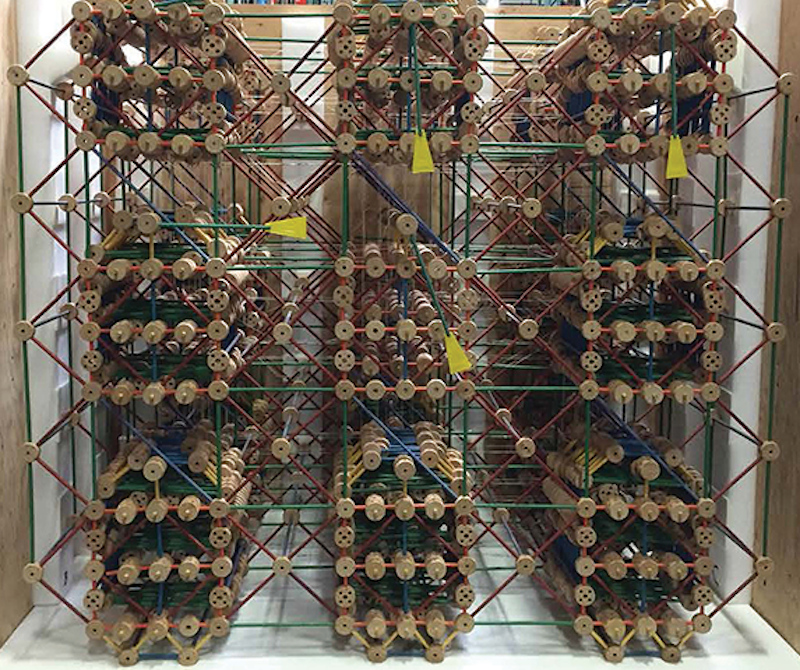
Neural Coding: A Truly Cerebral Puzzle
 In the 1950s and 1960s, neuroscientists David Hubel and Torsten Wiesel published a series of experiments that would shape the field for decades to come — they found that individual neurons in the visual system were tuned to specific attributes of the visual world. Some neurons were attuned to a horizontal line, for instance, while others were tuned to a bright circle with darker surroundings. This discovery provided a potential mechanism for how the brain constructs the complex visual world from simple sensory features.
In the 1950s and 1960s, neuroscientists David Hubel and Torsten Wiesel published a series of experiments that would shape the field for decades to come — they found that individual neurons in the visual system were tuned to specific attributes of the visual world. Some neurons were attuned to a horizontal line, for instance, while others were tuned to a bright circle with darker surroundings. This discovery provided a potential mechanism for how the brain constructs the complex visual world from simple sensory features.
Scientists subsequently learned that this correlation went beyond the visual system, after they discovered that cells in different regions respond to specific properties, such a sound, location or direction of motion.
But as researchers began to develop new technologies capable of recording from more and more neurons, the picture of neural coding that emerged became much more complex. “A cell might be tuned to one thing and then five seconds later respond to a different combination of things,” says Stanford University neuroscientist William Newsome, a member of the Simons Collaboration on the Global Brain (SCGB) executive committee.
Research over the last few years suggests that neurons often multiplex information — that is, they encode combinations of different factors, such as a particular odor with the direction of walking. Theoretical and experimental work suggests this multiplexing is an essential property of neurons, endowing them with the flexibility to perform different tasks.
This crucial insight marks neuroscience’s emergence from adolescence, according to Newsome. “We had been stuck with simple stories for 50 years,” he says. “Now we are really starting to come to grips with complexity and how to analyze it.”
Researchers are uncovering similar complexity in the role of different regions of the brain. Some brain areas are tied to specific functions — such as Broca’s area, essential for the production of speech — but many neural computations seem to be distributed across the brain. “We thought information about sensory and cognitive phenomena was primarily associated with specific regions,” says SCGB director David Tank, a neuroscientist at Princeton University. “But what we’re actually finding with large-scale recording is that we can decode information about different sensory and cognitive variables virtually anywhere in the brain.” For example, neuroscientists studying decision-making find that when an animal makes a choice, the information about that choice is encoded in many different regions.

Studies such as the International Brain Laboratory, a large-scale collaboration funded by the SCGB and Wellcome Trust, are trying to untangle this complexity by recording from all over the brain as an animal performs a task, something that’s never been done before. “The locality is not as clean as we thought; it’s localized but also much more diffuse,” says Columbia University neuroscientist Larry Abbott, an SCGB principal investigator and executive committee member. “As we look at a more complex picture, hopefully we’ll figure out how this duality between locality and non-locality plays out,” Abbott says.
Some parts of the nervous system, such as the eye, are exquisitely well organized, with an almost crystalline structure. But as neuroscientists become better able to map more and more parts of the brain, they see more evidence for randomness: No discernable pattern governs the structure of neural connections.
Some research suggests that this randomness may be important for neural processing. “It’s one of the great mysteries: Is the brain highly structured, or does it have randomness that is important for its computational organization?” Tank asks. “A number of neural circuit models that involve randomness of synaptic connectivity have interesting and powerful computational abilities.”
Tank hopes researchers will ultimately untangle this complexity, citing a computer built from Tinkertoys and designed to play tic-tac-toe. Encoded in the complex tangle of Tinkertoys, wire and weights is an algorithm capable of winning or drawing every instance of the game. “The brain may look like a crazy Rube Goldberg contraption to us, particularly when we look at the highly varied shapes of neurons and how they are connected,” Tanks remarks. “But perhaps at its heart it’s as organized, logical and structured as that Tinkertoy computer.”
